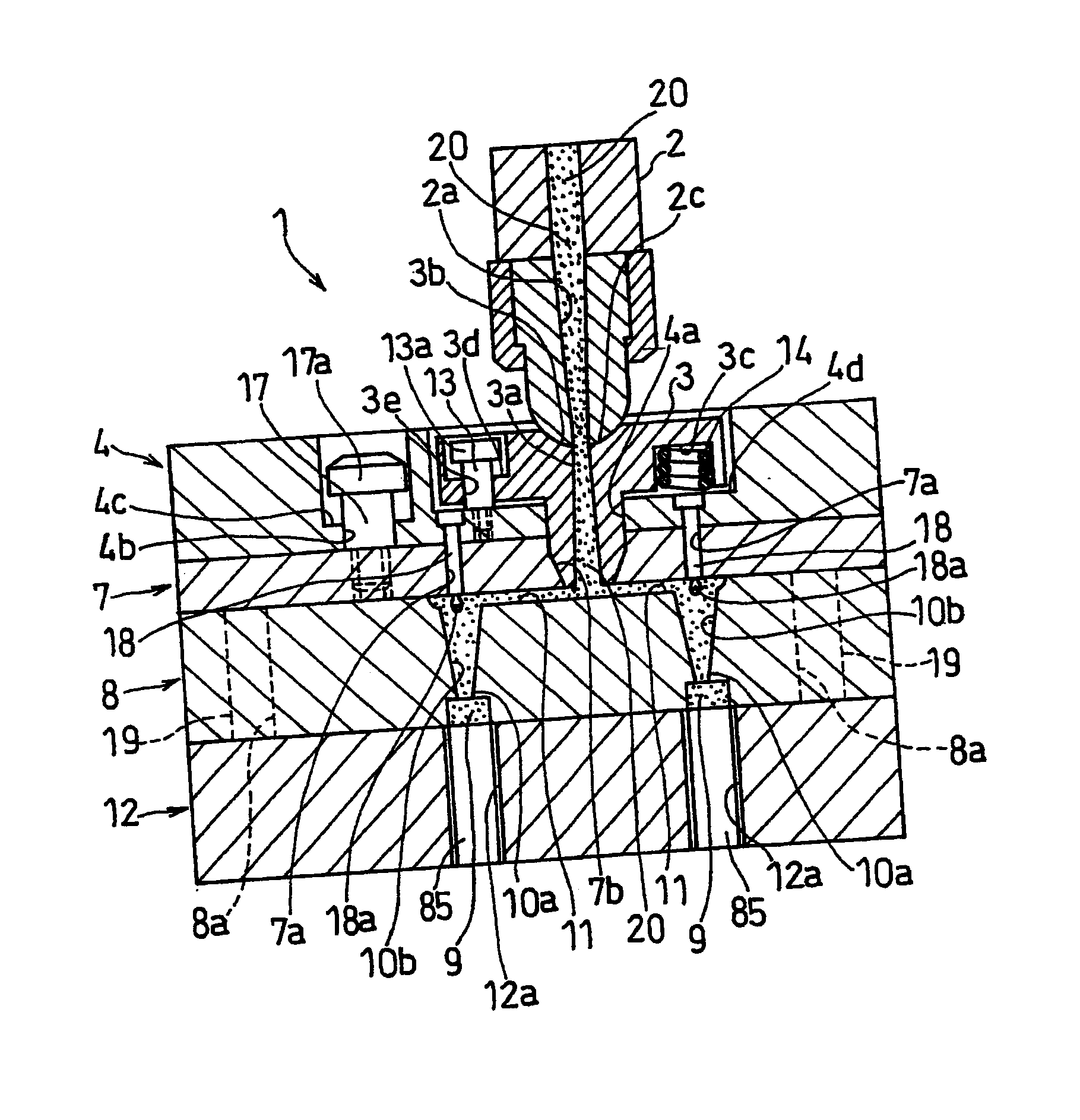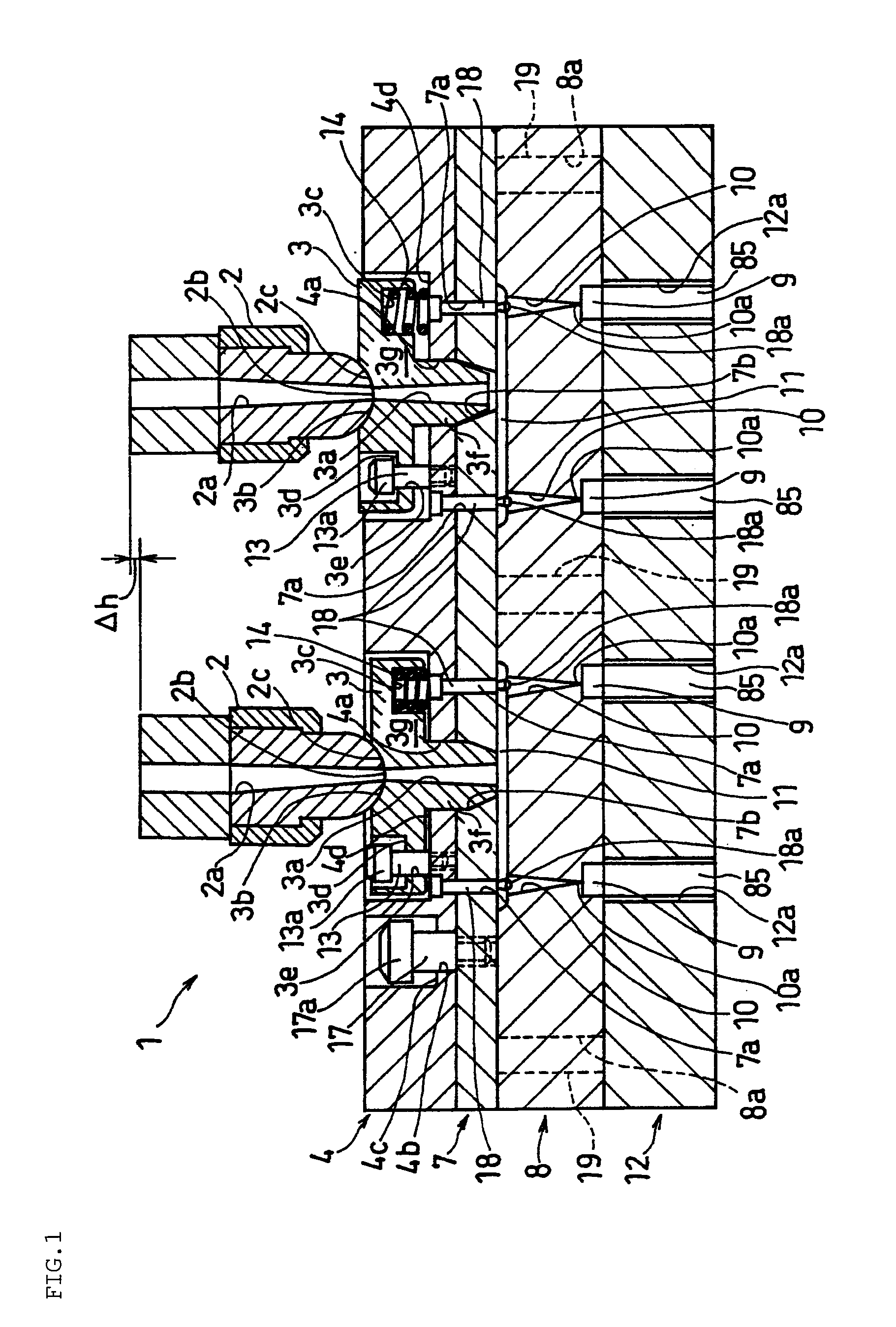Method and apparatus for producing battery pack
a battery pack and battery technology, applied in the direction of cell components, cell component details, food shaping, etc., can solve the problems of increased volume and weight of the pack case, increased cost, and increased risk of abnormal conditions, so as to improve productivity, reduce cross-sectional shape, and improve productivity
- Summary
- Abstract
- Description
- Claims
- Application Information
AI Technical Summary
Benefits of technology
Problems solved by technology
Method used
Image
Examples
embodiment 1
[0096]Embodiments of the invention are hereinafter described with reference to drawings. First, in order to facilitate understanding, a battery pack produced by the production method and apparatus of the invention is described. As an example of the battery pack, a battery pack using a flat, prismatic lithium ion secondary battery for use as the power source for a cell phone is described.
[0097]FIG. 9A to FIG. 9D illustrate a sequence of steps showing a part of the production process of a battery pack intermediate product (battery pack components) comprising a lithium ion secondary battery (hereinafter referred to as simply a secondary battery) and a circuit board which are integrally jointed together. A secondary battery 63 illustrated in the figure is composed of: an aluminum battery can 64 made of a cylinder having a bottom and a flat, oval cross-sectional shape; and power generating elements (not shown) contained therein. The opening of the battery can 64 is sealed by laser weldin...
embodiment 2
[0158]Embodiment 2 of the invention is hereinafter described. Since Embodiment 2 is an alteration of Embodiment 1, the differences from Embodiment 1 are mainly described below.
[0159]In Embodiment 2, instead of the step of FIG. 6 of Embodiment 1, a step which will be described with reference to FIG. 8A and FIG. 8B is performed. That is, when the solidified resin 23 is strongly bonded to the inner surface of the sprue 3a by the strong adhesive power of the molding material, lifting up the sprue bushing 3 in one stroke may cause breakage even if it is lifted up only for the distance d for applying such a tensile stress that the solidified resin 23 does not break. Thus, the elasticity of the push-up springs 14 is set to such elasticity that the sprue bushing 3 cannot be pushed up integrally with the bushing holder 4 when the bushing holder 4 lifts up from the state of FIG. 5. As a result, as illustrated in FIG. 8A, when the bushing holder 4 and the nozzle 2 are integrally lifted up to t...
embodiment 3
[0167]Embodiment 3 of the invention is hereinafter described. Since Embodiment 3 is an alteration of Embodiment 1, the differences from Embodiment 1 are mainly described below.
[0168]In Embodiment 3, at least one of the cavity plate 8 and the sprue bushing 3 is formed from heat-treated steel as the base material, and the inner surfaces of the runners 10 and the sprues 3a provided therein are formed so as to have a surface roughness of 10 to 100 μm by electrical discharge machining.
[0169]In the runner 10, the solidified resin 21 is strongly bonded to the inner surface of the runner 10, so it usually has poor mold releasability. However, in Embodiment 3, since the inner surface of the runner 10 is formed so as to have a surface roughness of 10 to 100 μm, the mold releasability of the solidified resin 21 from the runner 10 is improved. As a result, even if the solidified resin 21 is subjected to a strong lift-up force by the locking part 18, it does not break halfway and is separated fr...
PUM
| Property | Measurement | Unit |
|---|---|---|
| surface roughness | aaaaa | aaaaa |
| surface roughness | aaaaa | aaaaa |
| thickness | aaaaa | aaaaa |
Abstract
Description
Claims
Application Information
 Login to View More
Login to View More - R&D
- Intellectual Property
- Life Sciences
- Materials
- Tech Scout
- Unparalleled Data Quality
- Higher Quality Content
- 60% Fewer Hallucinations
Browse by: Latest US Patents, China's latest patents, Technical Efficacy Thesaurus, Application Domain, Technology Topic, Popular Technical Reports.
© 2025 PatSnap. All rights reserved.Legal|Privacy policy|Modern Slavery Act Transparency Statement|Sitemap|About US| Contact US: help@patsnap.com



